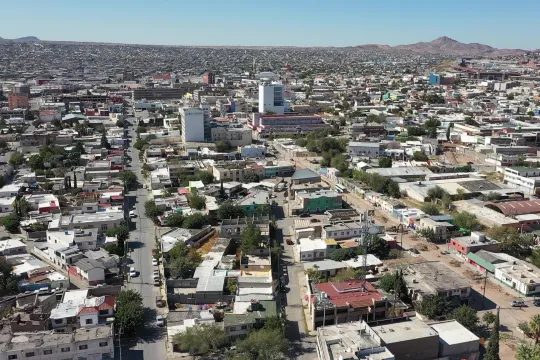
Introduction
The kingdom of Saudi Arabia is witnessing rapidly growing urbanisation due to the country's demographic, social and economic growth that, increased the number of cities to reach 285 in the year 2030. The Future Saudi Cities Programme was a joint programme developed by the Saudi Ministry of Municipal and Rural Affairs (MoMRA) and UN-Habitat, implemented in close cooperation with the municipalities of 17 major Saudi cities. The cities were selected based on their different population sizes, geographic distribution, and a range of criteria based on capacities and economic potential to create a more balanced regional development among the cities of Saudi Arabia. The chosen cities included Riyadh, Makkah, Jeddah, Taif, Madinah, Tabuk, Dammam, Qatif, Al-Ahsa, Abha, Najran, Jazan, Hael, Arar, Al Baha, Buraidah, and Skaka. The main objectives of the programme were:
• Provide a better urban environment in seventeen Saudi cities in accordance with the standards of city prosperity and well-being.
• Reduce the phenomenon of urban sprawl and spread and address urbanisation.
• Finding institutional sustainable solutions and coordination between the ministries and partners for development in the urban sector.
• Raising the institutional and technical capacity level in planning urbanisation processes and their management.
• Involvement of all segments of the population, considering their needs, especially those of women and youth, in developing urban plans and their implementation.
Context and background
After undertaking city-level reviews in the 17 cities, five cities were chosen as a representative cross-section for in-depth analysis. The city-level reviews considered the linkages between urban and territorial planning by examining the city within the relational context of its sub-region and exploring specific issues at the neighbourhood level. When referenced with City Prosperity Index reports and validation processes in the Rapid Planning Studio workshops, these reviews were used to extrapolate solid and evidence-based conclusions related to the planning system. Applied research, with a strong focus on action-oriented findings, was used to collect evidence to diagnose the strengths and weaknesses of the planning system and local planning practices in each city.
Plan and process
Applied research, with a strong focus on action-oriented conclusions, was used to collect evidence to diagnose the strengths and weaknesses of the planning system and local planning practices in each city. The methodology utilised used demonstration projects as avenues to apply and analyse the potential solutions before concluding on policy recommendations. UN-Habitat’s three-pronged approach considers spatial planning concerning legal and institutional frameworks and financial mechanisms. In this way, success criteria for the sustainable implementation of the spatial plans for the 17 Saudi Cities included flexible but enforceable rules and regulations, in addition to a financing strategy and projections.
To facilitate this process, a joint “FSCP Urban Lab” was created to strengthen endogenous capacities and develop tailored tools and instruments. The Lab, composed of international experts from the planning, legal and economy branches of the UN-Habitat Nairobi office, collaborated with Saudi-based staff in the UN-Habitat Riyadh office (selected by MoMRA) to enhance knowledge exchange and to apply a learning-by-doing method to the programme. As such, all 17 cities were simultaneously engaged in a capacity-building strategy that included foundational learning and ‘on the job’ training, culminating in Saudi-specific advanced training.
Results
The Future Saudi Cities Program was implemented; in close cooperation with the AMANAHs (Municipalities) of 17 major cities, which were selected based on the different population sizes and a range of capacities and economic potentials to create a more balanced urban development. The main outputs were:
• Elaboration of 17 City Spatial Profiles and two demonstration projects.
• Preparation of reports of prosperity and well-being indicators for 17 Saudi cities.
• Preparation of several proposals to improve the legislative and institutional system related to urban affairs.
• Capacity building in the areas of land management and spatial and strategic planning.
• Stimulating participatory planning and wise governance of cities.
• Arrange awareness campaigns regarding the development of towns and motivate active development partners.

